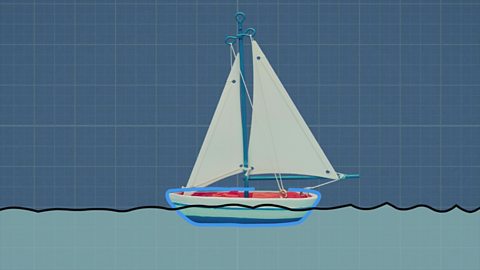Sometimes forces can move objects without even touching them. Let's find out more about forces at a distance!
Watch and learn
Video
Watch this video to find out more about forces that can act on objects without touching them.
How can forces act on objects that they don't touch? Let's find out.
Title: Forces at a distance
As well as pushing and pulling, there are other forces all around us:
Magnetic forces.
Electrostatic forces.
Gravitational forces that make things fall down to the ground – unless another force stops them.
An apple falling from a tree falls straight down. A ball thrown up, comes back down. And so do we when we jump. That’s because of gravitational forces. An object’s weight will pull it down.
This bowling ball is heavier than the basketball. If both are dropped at the same time, which do you think will hit the ground first?
They hit the ground at the same time. It doesn’t matter if something is heavy or light, gravity affects everything equally.
All objects fall at the same speed unless there is air resistance. Air resistance makes this light piece of paper fall slowly. If there was no air resistance, the paper would fall at the same speed as the bowling ball.
Magnetism is another force that works at a distance. A magnet can attract or repel objects even before they touch.
We describe one end of a magnet as the north pole and the other end the south pole. A north pole and a south pole attract each other, but to north pole or two south poles will repel each other.
Magnetic force can overcome gravity. That’s why this magnet can hover in mid-air.
Electrostatic force also attracts and repels objects. Rubbing the balloon on another surface creates a small electrostatic charge. This charge attracts the confetti towards the balloon without them even touching.
What are non-contact forces?
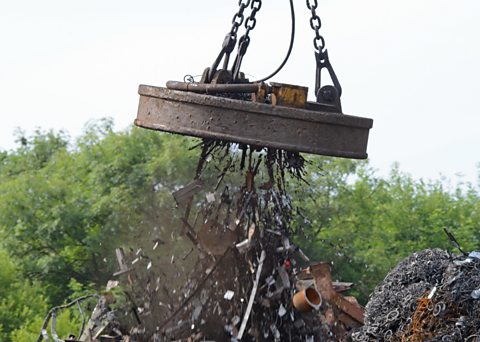
Some forces are called contact forces because they happen when things are touching, or in contact with each other. If you push or pull something, you are using contact forces.
Not all forces need things to touch each other to make something happen.
Some objects experience forces from things that are not touching them. These are called non-contact forces.
Here are three non-contact forces:
- Sorry, something went wrongCheck your connection, refresh the page and try again.: things near the Earth fall toward the Earth unless something holds them up. The Earth pulls any object towards the centre of the Earth without touching it.
- Sorry, something went wrongCheck your connection, refresh the page and try again.: magnets can be used to make other magnets and things made of iron and some other metals move without being touched.
- Sorry, something went wrongCheck your connection, refresh the page and try again.: something that has been electrically charged can make other things move without touching them.
All three of these are non-contact forces because they work at a distance without touching things.

Gravitational force
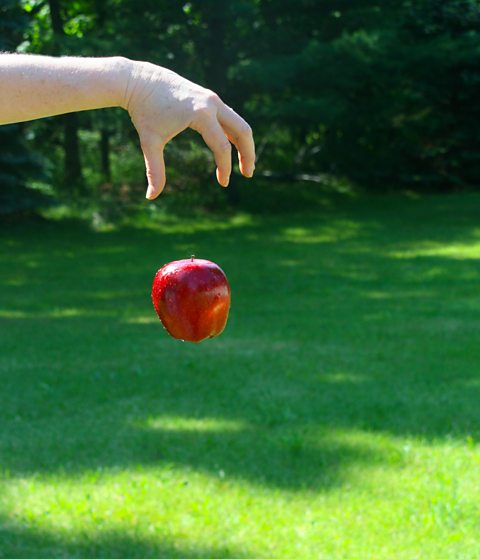
Gravity keeps us on the Earth’s surface and is the reason a ball kicked into the air comes back down.
Gravitational force is a non-contact force that pulls matter (anything you can touch) together. Even your own body has a tiny gravitational force as your body is made of matter.
The more matter something has, the greater the gravitational force it can apply.
This is why you don't really notice the gravitational pull of people, animals and objects around you. It also explains why gravity is stronger on Earth than the Moon.

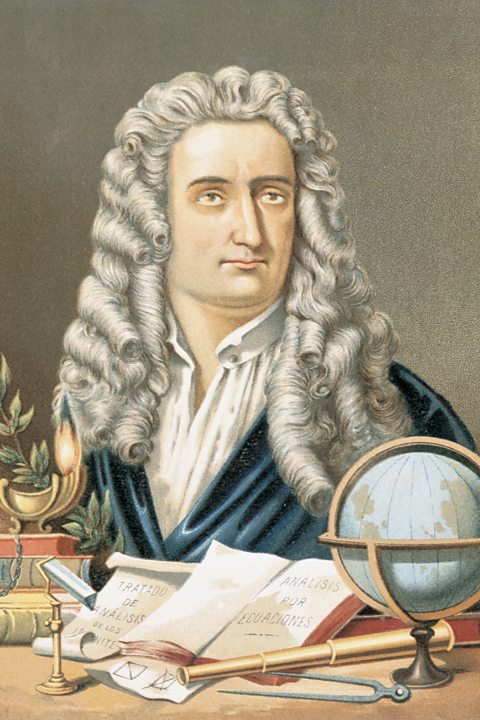
In 1666, Isaac Newton first came up with the idea of gravity.
It is thought that he was inspired by watching an apple fall from a tree. Newton wondered what force made the apple fall downward instead of moving sideways or simply floating away.
Did you know?
All forces are measured in units called Newtons, named after Sir Isaac Newton.
And we can measure gravitational force using a device called a Newton meter.

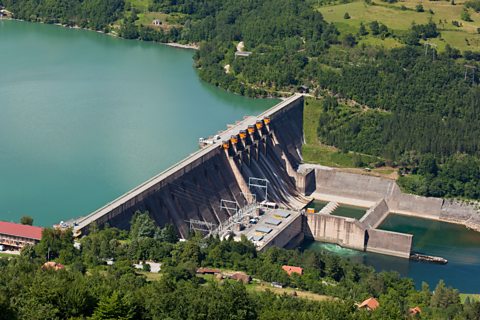
Using gravitational force
Gravitational force is what makes hydroelectric power stations work.
Water in a high reservoir is released and falls through pipes because of gravity. The energy of the falling water turns turbines which spin round, generating electricity.

Magnetic force
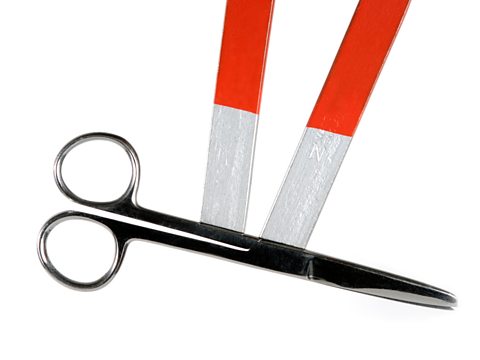
Magnetism is a force of attraction (pull) or repulsion (push) between two metal objects.
It is a non-contact force as the magnets do not have to be touching.
Magnets have an area around them called a Sorry, something went wrongCheck your connection, refresh the page and try again.. They can do things to other objects in this magnetic field.

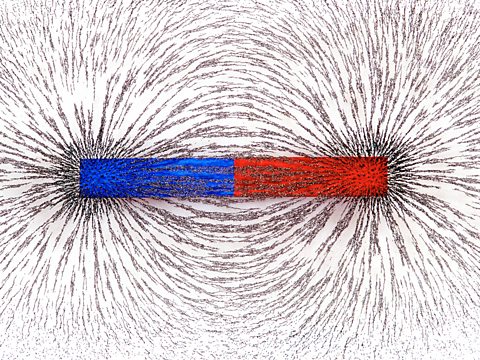
You can see a magnet's magnetic field by scattering tiny iron filings around it.
The iron filings form a pattern that reveals the lines of the magnetic field. The closer together the lines are, the stronger the magnetic force.
Can you see the magnetic force is strongest at the opposite ends of the magnet?


Using magnetic forces
Magnets do an important job at recycling centres.
Because magnets attract objects that contain iron, for example food tins, but do not attract aluminium, for example drinks cans, they can be used to separate these different metals so they can be reprocessed and reused.

What is a magnet? revision-guideWhat is a magnet?
Learn more about magnets.

Which materials are magnetic?
Learn which materials are attracted to a magnet with this Bitesize - KS2 Science article.

Electrostatic force

Electrostatic force is a non-contact force and can pull or push on objects without touching them.
Rubbing two materials together makes a negative charge move from the surface of one material to the other material.
As a result, one of the objects will have a positive charge and one will have a negative charge.
This means:
- Objects with different charges (positive and negative) will attract each other.
- Objects with similar charges (positive and positive or negative and negative) will push away from each other.
Electrostatic force is sometimes called static electricity. It is important to remember that static electricity is not the same as electricity in circuits.


Using electrostatic forces
Inkjet printers use electrostatic to create images.
The printer nozzle releases a spray of tiny, electrostatically charged ink droplets. Two charged plates are used to direct the ink drops to the exact place on the paper they are needed to create pictures or letter.


Sorry, something went wrongCheck your connection, refresh the page and try again. – a non-contact force that pulls matter together.
Sorry, something went wrongCheck your connection, refresh the page and try again. – a *non-contact force of attraction (pull) or repulsion (push) between magnetic objects and some metals.
Sorry, something went wrongCheck your connection, refresh the page and try again. – a non-contact force that can pull objects with different electrical changes together, or push objects with similar electrical charges apart.
Activity

Try this electrostatic attraction experiment!
You will need:
- Balloons
- An empty drinks can
- Small pieces of paper
- Access to a cold water tap
In this experiment, you rub a balloon to build up an electrostatic charge. See what this charge does when you bring the balloon near other objects.
Watch this video to find out more about this experiment.
Video
Watch this video to find out what to do!
Quiz
Now you know all about forces at a distance, why not test yourself with our fun quiz!
More on Forces
Find out more by working through a topic
- count6 of 11

- count7 of 11
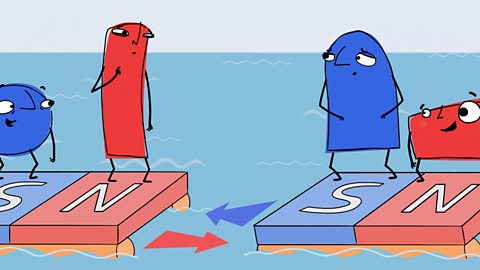
- count8 of 11

- count9 of 11
